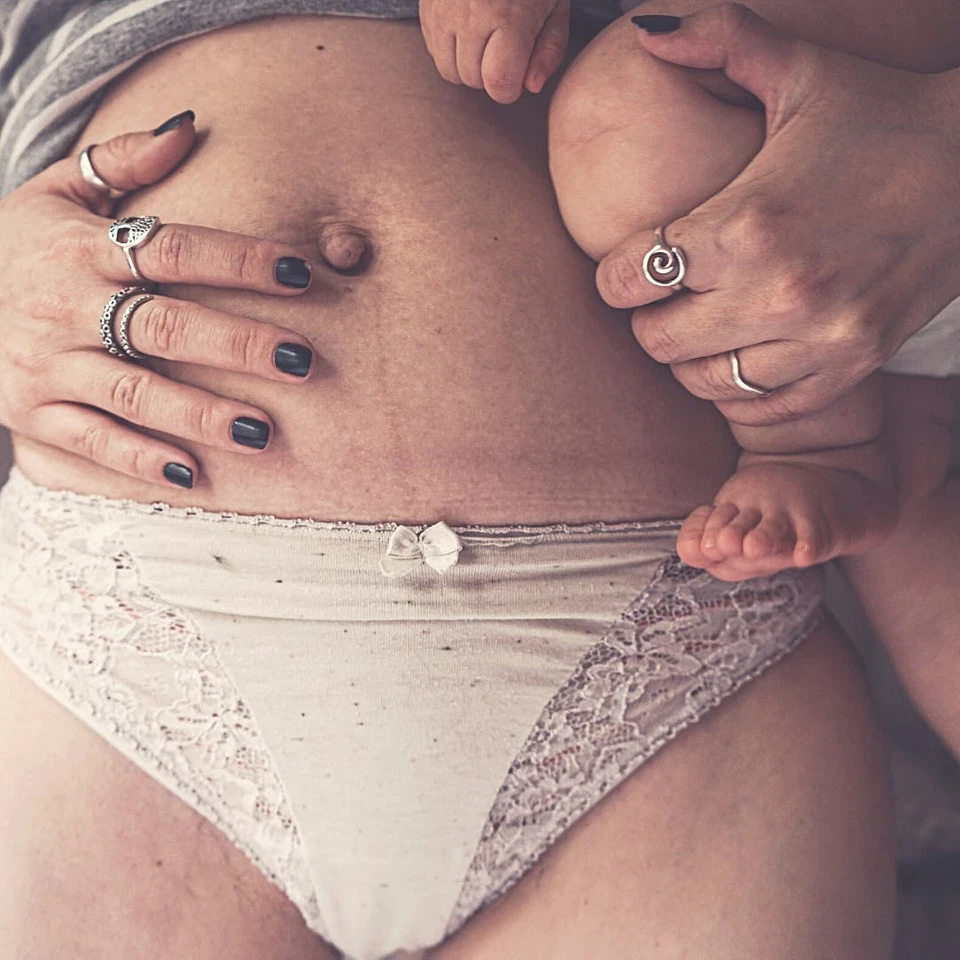Exercises For Diastasis Recti
Diastasis recti in pregnancy is very common, and postpartum fitness can be challenging. You have just gone through a major physical and emotional life event and now you are trying to get some of your strength back. One of the main issues that many postpartum women struggle with is the diastasis of rectus abdominis. You may notice a bulge in the center of your stomach after the delivery of your baby. Here are some exercises for diastasis recti that you can try in the comfort of your home. Remember to check with your ObGyn before trying any workouts for diastasis recti to make sure it is safe.
Exercises For Diastasis Recti That You Can Do At Home
Below are 3 exercises for diastasis of rectus abdominis that you can do at home postpartum. The best part about these movements is that they require little, if any, equipment.
Hands And Knees Hover
Get into a hands and knees position, and find a neutral spine. Using your exhale to draw your belly in, think of hugging your organs, as you lift your knees one inch off the ground and hover. Maintain this position making sure you aren’t holding your breath
Lean Backs With Yoga Block Squeeze
Get into a tall kneeling position making sure you are in a neutral spinal alignment, where your ribcage is stacked directly on top of your pelvis. With your elbows bent at your sides, squeeze a yoga block or small ball and feel your abs engage. Maintain this squeeze and spinal positioning as you lean back as far as you can without losing your alignment or holding your breath. Return to the starting position and repeat
90/90 arm reaches
Lie on your back with your hips and knee bent into a tabletop position, arms straight in front of your chest. Make sure your ribcage is flush with your abdomen and your lower back is imprinted into the floor. Gently squeeze a yoga block or small ball and feel your abs engage. Using your breath, Inhale reaching your arms as far as you can behind your head without losing your lower back or ribcage position. Exhale bring your arms forward and actively reach up to perform a small crunch.
Related: Postpartum Rib Pain
Stop these exercises if you experience any of the following:
- Feel pain
- Feel a pulling sensation through a c-section scar
- Feel pressure in your bladder or rectum
- Experience leaking urine during or after a workout
- Can’t breathe easily
If the above happens, stop these exercises and try modifying your position or shortening your range of motion. You can also try using a breath strategy, such as an exhale during the movement to see if your symptoms resolve. If the symptoms don’t resolve, stop the exercises and consult with a pelvic floor physical therapist. A pelvic floor therapist can help you find specific exercises and strategies to help strengthen your core.
Keys to consider while doing exercises for diastasis recti:
- Make sure you aren’t holding your breath! Our breath is the very first part of core retraining.
- Modify your position and range of motion as needed to avoid straining and breath holding! You have more control when moving in smaller ranges versus larger ranges of motion. Only move your limbs and trunk to where you can maintain tension in your tummy.
- When you lose tension, use a breath strategy! Exhaling on exertion can help keep tension in your tummy. You can also think of blowing through a small straw.
- Add Load! Adding load, or weight can provide feedback to help turn your abs on. It is also important to add load as you progress to help challenge your core stability and strength.
Exercises For Diastasis Recti: Take Home Points
Before trying any workouts for diastasis recti, you must check with your ObGyn to make sure it is safe. Once your doctor has cleared you, begin exercising slowly. Increase your workout intensity as your body allows. Diastasis recti is a very common occurrence during pregnancy and postpartum. It may be more obvious when the abdominal muscles are tense. It does not only occur in pregnant people. Diastasis recti can also occur in men who have abdominal obesity. When considering diastasis it is important to know healing time frames. Each person’s birth experience is different and healing time will vary based off of the type of birth you had. This can’t be sped up. While your body is recovering from birth it is essential to rebuild a solid foundation and progress strength slowly. Focus on intention when doing these exercises over the intensity of them!
A common question moms often ask is what heals a diastasis. And the answer is… no one really knows. There is no one muscle that closes the gap. Although thorough research has been conducted on this topic, there are no specific protocols or exercises that will do the trick. This is because the individual characteristics that make each of us unique such as how we DO life and our genetic make up all come into play when considering diastasis healing. However, from the studies done, researchers believe healing a diastasis occurs through cellular signaling within the fascia in response to loading over a long period of time. In other words, it takes a consistent load to the tissue over an extended period of time in order to create lasting change.
It is important to remember that 5 minutes of exercise isn’t going to change what happens when you are upright for extended periods of time and engaging in other activities of daily life. It is important to consider your alignment, breathing patterns, and body mechanics throughout your day as these foundational principles are just as essential to diastasis.
We discuss products we think are useful to people. If you buy something through our links, we may earn a commission. Remember to check with your personal physician to see if a product recommended is right for you.








